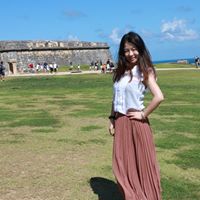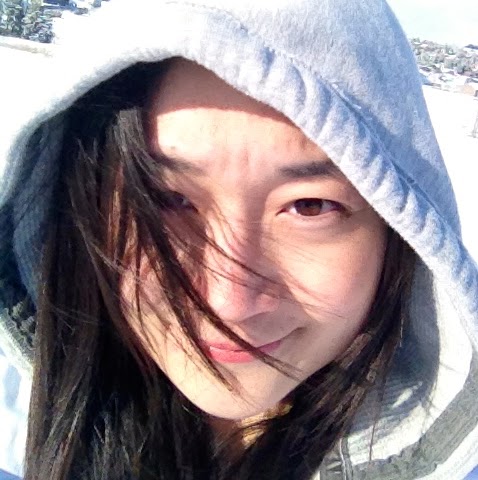Xing Zhang
age ~42
from San Jose, CA
- Also known as:
-
- Xin G Zhang
- Xing X Liu
Xing Zhang Phones & Addresses
- San Jose, CA
- Chapel Hill, NC
- Sunnyvale, CA
- 1368 El Camino Real STE 210, Santa Clara, CA 95050
- Arlington, TX
- Houston, TX
Resumes

Xing Zhang San Jose, CA
view sourceWork:
Transcosmos Information Creative (China) Co., Ltd
Jan 2014 to Apr 2014
Program Manager Transcosmos Information Creative (China) Co., Ltd
Jun 2013 to Dec 2013
Bridging System Engineer Transcosmos Information Creative (China) Co., Ltd
Aug 2008 to May 2013
Sr System Engineer Transcosmos Information Creative (China) Co., Ltd
Sep 2007 to Jul 2008
System Engineer Transcosmos Information Creative (China) Co., Ltd
Aug 2004 to Aug 2007
Programmer
Jan 2014 to Apr 2014
Program Manager Transcosmos Information Creative (China) Co., Ltd
Jun 2013 to Dec 2013
Bridging System Engineer Transcosmos Information Creative (China) Co., Ltd
Aug 2008 to May 2013
Sr System Engineer Transcosmos Information Creative (China) Co., Ltd
Sep 2007 to Jul 2008
System Engineer Transcosmos Information Creative (China) Co., Ltd
Aug 2004 to Aug 2007
Programmer
Education:
Northwestern Polytechnic University
Fremont, CA
May 2014 to 2000
M.S. in Computer Science Tianjin University of Finance and Economics
1999 to 2004
B.S. in Information System Management
Fremont, CA
May 2014 to 2000
M.S. in Computer Science Tianjin University of Finance and Economics
1999 to 2004
B.S. in Information System Management
Skills:
C/C++, Java, HTML, CSS, JavaScript, jQuery, AJAX, JSON, JSP, Bash Shell, PL/SQL, T-SQL, COBOL

Xing Zhang Galves
view sourceWork:
University of Texas Medical Branch
Apr 2012 to 2000
Postdoctoral Fellow
Apr 2012 to 2000
Postdoctoral Fellow
Education:
Shenyang Pharmaceutical University
Shenyang, China
2006 to 2011
PhD in Phytochemistry
Shenyang, China
2006 to 2011
PhD in Phytochemistry
Medicine Doctors

Xing Jian Zhang
view sourceUs Patents
-
Movement Of Virtual Objects With Respect To Virtual Vertical Surfaces
view source -
US Patent:20220221976, Jul 14, 2022
-
Filed:Jan 13, 2021
-
Appl. No.:17/148366
-
Inventors:- Palo Alto CA, US
Yu Lou - Palo Alto CA, US
Anandram Sundar - Santa Clara CA, US
Chun Kai Wang - Sunnyvale CA, US
Jack Mousseau - Palo Alto CA, US
Kevin May - Oakland CA, US
Xing Zhang - Santa Clara CA, US
Geng Yan - San Carlos CA, US -
International Classification:G06F 3/0481
G06F 3/0486
G06F 3/0484 -
Abstract:A virtual vertical surface in a three-dimensional space that represents a physical room may be detected. Responsive to a first user input gesture, movement of a virtual object within the three-dimensional space may be displayed. The movement may be to a first location in which a portion of the virtual object intersects a portion of the virtual vertical surface. A virtual vertical surface designator may be displayed corresponding to the virtual vertical surface based at least in part on the portion of the virtual object intersecting the portion of the virtual vertical surface. Upon determining that a second user input gesture meets or exceeds a movement threshold, movement of the three-dimensional object from the first location to a second location within the three-dimensional space may be displayed. The second location may appear beyond the virtual vertical surface.
-
High Step Coverage Tungsten Deposition
view source -
US Patent:20220181158, Jun 9, 2022
-
Filed:Apr 7, 2020
-
Appl. No.:17/601918
-
Inventors:- Fremont CA, US
Tsung-Han Yang - San Jose CA, US
Anand Chandrashekar - Fremont CA, US
Xing Zhang - San Jose CA, US -
Assignee:Lam Research Corporation - Fremont CA
-
International Classification:H01L 21/285
H01L 21/768 -
Abstract:Methods of depositing a tungsten nucleation layers that achieve very good step coverage are provided. The methods involve a sequence of alternating pulses of a tungsten-containing precursor and a boron-containing reducing agent, while co-flowing hydrogen (H2) with the boron-containing reducing agent. The H2 flow is stopped prior to the tungsten-containing precursor flow. By co-flowing H2 with the boron-containing reducing agent but not with the tungsten-containing precursor flow, a parasitic CVD component is reduced, resulting in a more self-limiting process. This in turn improves step coverage and conformality of the nucleation layer. Related apparatuses are also provided.
-
Reactant Gas Pulse Delivery
view source -
US Patent:20230130557, Apr 27, 2023
-
Filed:Mar 3, 2021
-
Appl. No.:17/907959
-
Inventors:- Fremont CA, US
Leonard Wai Fung KHO - San Francisco CA, US
Anand CHANDRASHEKAR - Fremont CA, US
Michael BOWES - Scotts Valley CA, US
Yong SUN - Fremont CA, US
Xing ZHANG - San Jose CA, US
Sumit Subhash SINGH - Bengaluru, IN -
International Classification:C23C 16/455
C23C 16/04
C23C 16/52
H01L 21/02
H01L 21/285
H01L 21/768 -
Abstract:Providing herein are methods of delivery of gas reactants to a processing chamber and related apparatus.
-
Placing And Manipulating Multiple Three-Dimensional (3D) Models Using Mobile Augmented Reality
view source -
US Patent:20230054420, Feb 23, 2023
-
Filed:Oct 11, 2022
-
Appl. No.:18/045688
-
Inventors:- Palo Alto CA, US
Jonathan BERNADEL-HUEY - San Francisco CA, US
Kevin MAY - Oakland CA, US
Xing ZHANG - Santa Clara CA, US
Karl HILLESLAND - San Carlos CA, US
Jack MOUSSEAU - Palo Alto CA, US
Simon FOX - Palo Alto CA, US -
International Classification:G06T 19/20
G06T 19/00
G06Q 30/06
G06F 3/01 -
Abstract:Techniques for placing and manipulating multiple three-dimensional (3D) models using mobile augmented reality (AR) are described. One technique includes receiving a first request to initialize an AR simulation of a first product for sale within a physical environment. In response to the first request, a first 3D model of the first product for sale is rendered onto the screen. After rendering the first 3D model, a second request to visualize a second product for sale within the physical environment is received during the AR simulation of the first product for sale. In response to the second request, a second 3D model of the second product for sale is rendered onto the screen with the first 3D model.
-
Optically Challenging Surface Detection For Augmented Reality
view source -
US Patent:20210248798, Aug 12, 2021
-
Filed:Apr 28, 2021
-
Appl. No.:17/243273
-
Inventors:- Palo Alto CA, US
Jared Corso - San Mateo CA, US
Xing Zhang - Sunnyvale CA, US
Arnab Dhua - Mountain View CA, US
Yu Lou - Mountain View CA, US
Jason Freund - Cupertino CA, US -
International Classification:G06T 11/60
G06T 7/13 -
Abstract:Approaches in accordance with various embodiments provide for the presentation of augmented reality (AR) content with respect to optically challenging surfaces. Such surfaces can be difficult to locate using conventional optical-based approaches that rely on visible features. Embodiments can utilize the fact that horizontal surfaces can be located relatively easily, and can determine intersections or boundaries of those horizontal surfaces that likely indicate the presence of another surface, such as a vertical wall. This boundary can be determined automatically, through user input, or using a combination of such approaches. Once such an intersection is located, a virtual plane can be determined whose relative location to a device displaying AR content can be tracked and used as a reference for displaying AR content.
-
Optically Challenging Surface Detection For Augmented Reality
view source -
US Patent:20200334882, Oct 22, 2020
-
Filed:Jun 17, 2020
-
Appl. No.:16/903932
-
Inventors:- Palo Alto CA, US
Jared Corso - San Mateo CA, US
Xing Zhang - Sunnyvale CA, US
Arnab Sanat Kumar Dhua - Mountain View CA, US
Yu Lou - Mountain View CA, US
Jason Freund - Cupertino CA, US -
International Classification:G06T 11/60
G06T 7/13 -
Abstract:Approaches in accordance with various embodiments provide for the presentation of augmented reality (AR) content with respect to optically challenging surfaces. Such surfaces can be difficult to locate using conventional optical-based approaches that rely on visible features. Embodiments can utilize the fact that horizontal surfaces can be located relatively easily, and can determine intersections or boundaries of those horizontal surfaces that likely indicate the presence of another surface, such as a vertical wall. This boundary can be determined automatically, through user input, or using a combination of such approaches. Once such an intersection is located, a virtual plane can be determined whose relative location to a device displaying AR content can be tracked and used as a reference for displaying AR content.
-
Curated Environments For Augmented Reality Applications
view source -
US Patent:20200258144, Aug 13, 2020
-
Filed:Feb 11, 2019
-
Appl. No.:16/272902
-
Inventors:- Palo Alto CA, US
Xing Zhang - Sunnyvale CA, US
Frank Partalis - San Francisco CA, US
Yu Lou - Palo Alto CA, US
Colin Jon Taylor - Orinda CA, US
Simon Fox - Palo Alto CA, US -
International Classification:G06Q 30/06
G06Q 30/02
G06T 19/00
G06N 3/08
G06F 3/0484
G06T 7/50 -
Abstract:A camera is used to capture image data of representations of a physical environment. Planes and surfaces are determined from a representation. The planes and the surfaces are analyzed using relationships there between to obtain shapes and depth information for available spaces within the physical environment. Locations of the camera with respect to the physical environment are determined. The shapes and the depth information are analyzed using a trained neural network to determine items fitting the available spaces. A live camera view is overlaid with a selection from the items to provide an augmented reality (AR) view of the physical environment from an individual location of the locations. The AR view is enabled so that a user can port to a different location than the individual location by an input received to the AR view while the selection from the items remains anchored to the individual location.
-
Video-Enhanced Greeting Cards
view source -
US Patent:20170206711, Jul 20, 2017
-
Filed:Dec 30, 2016
-
Appl. No.:15/395306
-
Inventors:- Santa Clara CA, US
Libo Su - San Jose CA, US
Xing Zhang - Mountain View CA, US -
International Classification:G06T 19/00
G06F 3/0484
G06K 9/00
G06T 15/00 -
Abstract:Provided are computer systems, methods, and non-transitory computer-readable medium configured for receiving or generating a video, extracting a still image from the video, printing the still image on a physical card and sharing the card. Viewing of the card can be augmented by the system that captures an image of the printed image on the card, uses the image to identify the video from which the printed image is extracted, and overlays the video on a visual representation of the card on the system, thereby generating an animated viewing experience from a card having a still image. Three-dimensional contents can be added to the augmented reality presentation, further enhancing the user experience.

Zhang Yi Xing
view source
Xing Zhang ()
view source
Zhang Xing Yi
view source
Xing Zhang Fok
view source
Xing Zhang
view source
Xing Zhang De
view source
Xing Zhang
view source
Xing Zhang
view sourceGoogleplus

Xing Zhang

Xing Zhang
Education:
Peking University

Xing Zhang

Xing Zhang

Xing Zhang

Xing Zhang

Xing Zhang

Xing Zhang
Youtube
Get Report for Xing Zhang from San Jose, CA, age ~42





